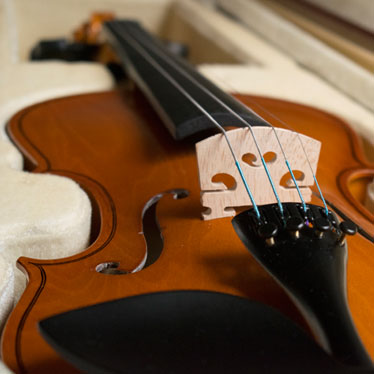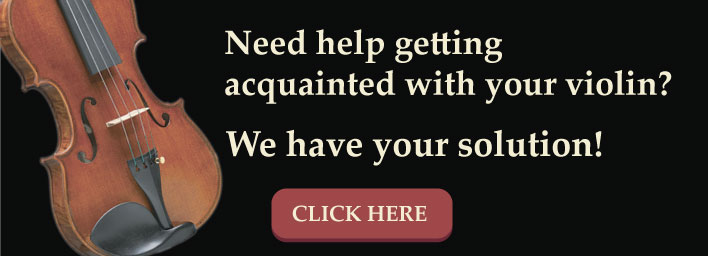Why Do Gauge and Tension Matter for Violin Strings?

When musicians talk about which strings are the best for their violin, they often talk about how various string materials affect sound quality. This is certainly something to consider, but arguably, beginning and newly-intermediate violinists should place a greater emphasis on string gauge and tension than anything else as they explore the world of violin strings.
Gauge and Tension Affect Ease of Playing and Sound
First, let’s define the terms:
- Gauge. Gauge refers to the diameter of the string. It tells you how thick a string The weight and mass of the string are also related to this figure. So the greater the string’s diameter, the heavier it is, and this can pose a greater challenge for newer students focusing on finger strength, dexterity and placement accuracy. A string’s weight also affects its tension, affecting tone and a string’s response to finger pressure and bowing.
- Tension. Tension is the horizontal force placed on a string stretched between the tuning peg and the tailpiece or fine tuner. The total tension on a string depends on the gauge of the string, the vibrating length of the string, and the frequency of the vibrations along the string’s length. Tension is also affected by the types of metals a string is wound with.
Here in the U.S., it’s common to label or describe a string in terms of gauge weight/tension: light, medium, or heavy. You may also see them listed as low, medium, and high. In either case, gauge and tension affect how easy or difficult the strings are to play, as well as how they sound.
As you can imagine, light or thin gauge strings create a brighter and more forward sound, while heavy gauge strings require more tension and stronger fingers to produce a fuller and more powerful sound.
Also worth noting, a violin’s structural qualities and character affect a player’s string gauge and tension preferences; some violin’s sound better with a lighter gauge string, while others sound best with medium or heavy gauge strings.
Light or thin gauge strings (low, light or soft tension)
In packaging terms, light or thin gauge strings may also include the words dolce, weich, or soft. Because light gauge strings are thinner, less tension is required to bring these thinner strings to their designed pitch. If your violin has a naturally heavy or dark sound quality, you may intentionally use light gauge strings to brighten it up a bit.
On the flip side, a beginner opting for a more gentle playing experience may enjoy starting with thin gauge (soft tension) strings because it’s easier on the hand. If the strings are overly responsive or create thin, shrill, tinny or bright sounds, try medium tension strings. Odds are the switch will enhance your playing experience.
Medium gauge strings (medium tension)
You may also see these listed as mittel gauge strings. They are the most popular string choice for violinists. These strings are designed intentionally to bring a balanced response and tone to just about any violin. We recommend newer violinists try medium strings first. However, you may want to purchase a few different types of middle gauge strings because manufacturers’ categorization of gauge/tension varies quite a bit. Through experimentation, you’ll notice that within medium gauge options you may acquire a preference for lighter- or heavier- versions.
Heavy or thick gauge strings (heavy or high tension)
These strings can also be marked as stark, or forte. They require greater tension to produce the correct tone, and they are less responsive. This makes them trickier to play and harder on more tender or weaker fingers. You’re bowing arm will also get a workout as you try to produce more nuanced sound from high tension strings.
If you use high tension strings and notice they sound dull, they are probably the wrong gauge/tension for your instrument. Instead, switch to a medium gauge or even a low tension string and see which sound you prefer.
There’s no doubt practice makes perfect when it comes to violin technique. However, you may find that switching to strings with a different gauge/tension, is the key to improving your sound while simultaneously conserving playing energy.
Sponsored by Thomastik-Infeld


